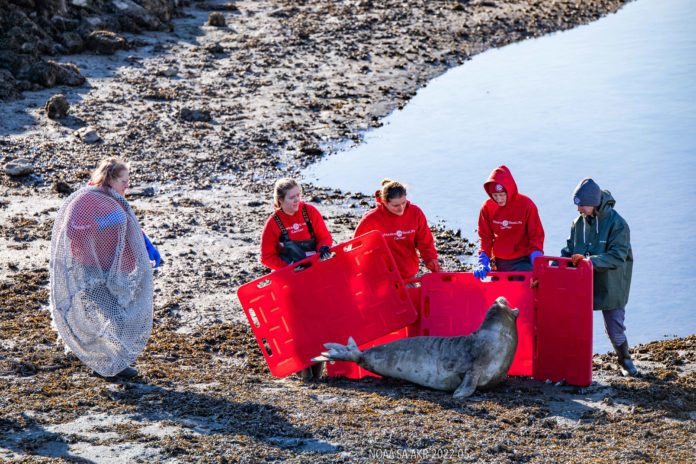
A one-year-old female elephant seal was treated at the Alaska SeaLife Center in Seward in early April, then successfully released back into the ocean.
The ASLC Wildlife Response Team first started monitoring this animal after a call to the ASLC Stranded Marine Animal Hotline (1-888-774-SEAL). The caller reported an elephant seal hauled out on the main boat ramp in the Seward Boat Harbor on March 19. The animal appeared bloated and lethargic, but was seen retreating to the water later that day during high tide.
ASLC received two more reports of the elephant seal hauling out in other locations around the boat harbor. When the animal was observed for the third time, the Wildlife Response Team determined that intervention was necessary. After receiving approval from the National Oceanic and Atmospheric Administration, the animal was transported to the Center with the help of the Coast Guard on March 21.
Upon the initial admit exam, the main concerns of the veterinary team were the animal’s bloated appearance and unusual lethargy. It was also clear that the seal was going through its annual catastrophic molt.
“Elephant seals will haul out on Alaska beaches during their annual catastrophic molt. Because of this molt, they can look and sound sickly compared to your typical harbor seal. Elephant seals will have superficial wounds over their body because they don’t just lose their hair, they shed the underlying layer of skin when they molt,” ASLC Wildlife Response Curator, Jane Belovarac notes. “When this particular elephant seal was first observed, our main concern was the bloating and labored breathing. We assumed that the superficial wounds were due to a molt, and our intake exam confirmed those suspicions.”
The bloating subsided quickly, and the blood and fecal analysis came back with no additional concerning results. The Veterinary and Wildlife Response Teams determined that the best course of action for the large seal would be to return her to the ocean as soon as possible, in hopes that she would not haul out in the busy Seward boat harbor again.
On March 24, the ASLC Wildlife Response Team successfully released the elephant seal at Lowell Point, about two miles south of downtown Seward. Local volunteers assisted the team in lifting and walking the 320-pound seal, who was safely enclosed in a specially-designed large metal kennel, to the beach. She easily went into the water and headed toward the open ocean.





